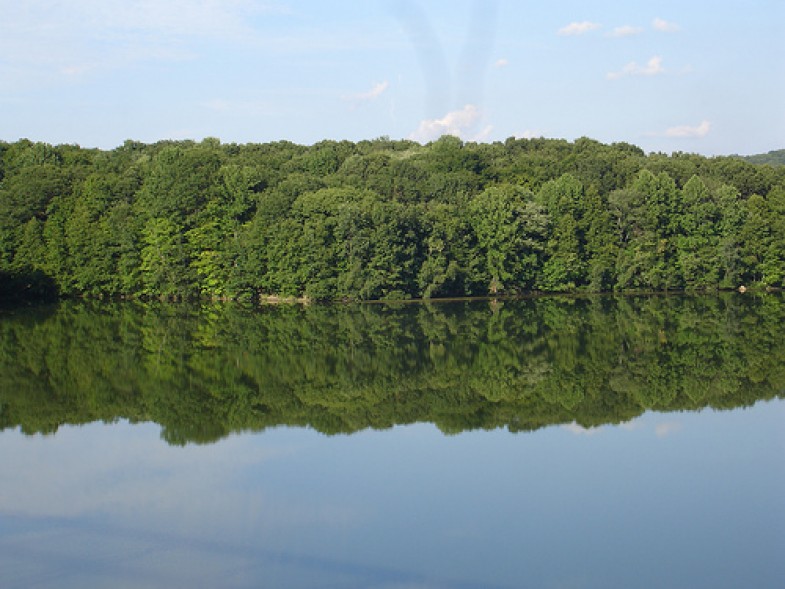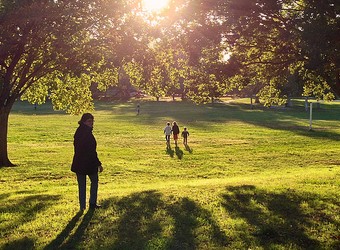Environmental disasters caused by human folly are all too familiar. But what about the environmental serendipity? The unexpected stories where nature and humans co-exist harmoniously. They do happen, and some may be found close at hand by looking at your faucet and following the water back to its source.
Before New York and Boston were fierce baseball competitors, they shared a certain wisdom about their drinking water supplies. Boston draws its water from the Quabbin and Wachusetts reservoirs west of the city. North of New York City stretches the metropolis’ water sources — the Croton and Catskill-Delaware watersheds. Gravity is a good friend to these port cities. Both receive their water, largely unfiltered and un-pumped, from protected watersheds in the hills.
Both of these success stories go back to the days when foul water and a spate of dysentery could lose you an election. This pushed politicians to direct engineers and urban planners to find safe water sources. With populations booming in the 1800s, Boston and New York looked to their hinterlands to quench their growing thirst.
The development of these rural water sources wasn’t a walk in the park. Rural communities aren’t usually enamored with ceding control of their natural resources to satisfy insatiable urban areas. New York and Boston’s rural neighbors were no exception. And for good reason. Some of these communities were flooded to create reservoirs, and fences were erected to keep people out of protected areas.
Despite some ill will from rural residents, the benefit of tapping distant sources of water was a steady, healthy flow to the cities, free of urban contaminants. Protecting wild nature was an afterthought, but today the New York watershed protects 1972 square miles of land and the Boston watershed protects another 156 square miles — a combined landmass considerably larger than Yosemite National Park, and one which is a valuable habitat for wildlife. These watershed protection programs are stitched together with a mosaic of city, state and federal policies, with contributions for example, from the US Forest Service, the Department of Agriculture and the Water Resources Development Act Projects (WRDA).
The legislative and administrative work to protect watersheds must be nimble and creative to fend off creeping suburbanization and to address the aforementioned ill that threatens urban-rural coexistence. Billions of public dollars have been spent to purchase land and hammer out conservation easements — agreements in which landowners abide by strict land use rules in exchange for property tax reductions. New York City, particularly, is famous for developing programs that use economic incentives rather than government regulations to encourage land-conservation and watershed protection by landowners.
This ecosystem services model is especially well suited to New York where, unlike in Massachusetts, a high percentage of the watershed is still owned privately. To incentivize dairy farmers to keep cow excrement from streams that flow into drinking water reservoirs, the New York water authority in the early 1990s built into its budget — and into ratepayers’ bills — a line item for a local Watershed Agricultural Council to help farmers improve their manure management systems. Participating farmers reached out to neighbors to grow the program and ultimately achieved the critical mass needed to guarantee New York City’s clean water. The big stick of regulating dairy farms was looming, but it was carrots that closed the deal.
The US Environmental Protection Agency had been dubious about this model. Across the country, their cookie-cutter solution was the construction of water treatment plants to meet federal clean water standards — commonly known these days as “grey infrastructure” solutions. But the EPA was so pleased with the clean water resulting from New York’s “green infrastructure” program, which let nature do the heavy lifting, that it allowed New York City to forego building a filtration plant, saving ratepayers billions of dollars.
By paying rural landowners to protect natural ecosystems, residents of New York City and Boston have contributed to protecting wild areas outside of the city limits. One can debate whether the resulting system is financially fair — in truth getting urban water users to create wilderness areas may be a form of regressive taxation, depending on how the water utility structures its rates. But the results of these water utility source protection programs are unmistakable: Clean water and preserved wilderness.
That holy grail of urban-rural harmony is still a work in progress. A hunter tracking an animal who is thwarted by a Massachusetts Department of Conservation boundary may not be a happy hunter. But over the years, restrictions on human activity in watershed areas have softened. In a pilot program, New York City discovered that it could allow boating and hiking in some areas that had earlier been closed to recreation without sacrificing water quality. In some cases, the state even permits sustainable timber harvesting. The easing of restrictions can be a boom to the local economy. Local wilderness guides running fishing expeditions on public waters and locally-owned kayak rental businesses are on the rise in some watershed areas.
The New York City Department of Environmental Protection – which manages New York City’s drinking water supply – promotes the Watershed Agricultural Council’s Pure Catskills label. By building consumer awareness about the benefits of purchasing goods produced sustainably in the watershed, the program aims to encourage local economic development and protect land and water resources.
The Massachusetts Resources Water Authority, which sells wholesale water to Boston’s Water and Sewer Commission, likewise seeks to make urban consumers aware about the rural origins of their drinking water. The water authority recently sent an explanatory insert with my water bill, mapping how tap water travels to my faucet. The informative piece, a kind of hydrology 101, noted that Boston won the American Water Works Association prize for best tasting drinking water in the United States. The New York and Boston water utilities want their customers to understand their water’s rural roots. An informed customer is a good citizen, an advocate for conservation and vibrant rural communities, and perhaps a vote against future fracking in the watershed.
As the world’s population spikes, and more people migrate to urban areas, cities will have to grapple with their uncomfortable dependence on rural areas for water. Smart water utilities, like those in New York and Boston embrace nature and the human communities that steward ecosystems. They offer an important example of urban planning that can bring benefits to urban and rural regions alike. The “accidental wilderness” their forward-thinking strategy has produced, allows us to drink deeply from the same source as bears and loons.
Daniel Moss has worked in community-based resource management in the US and Latin America for 30 years. He writes on water issues for a variety of journals and blogs and coordinates Our Water Commons. He recently published a study entitled, “Urban Water Utilities and Upstream Communities Working Together”, about how Latin American water operators collaborate with upstream communities for watershed protection and water governance. This article was adapted from one first appearing in Earth Island Journal.






